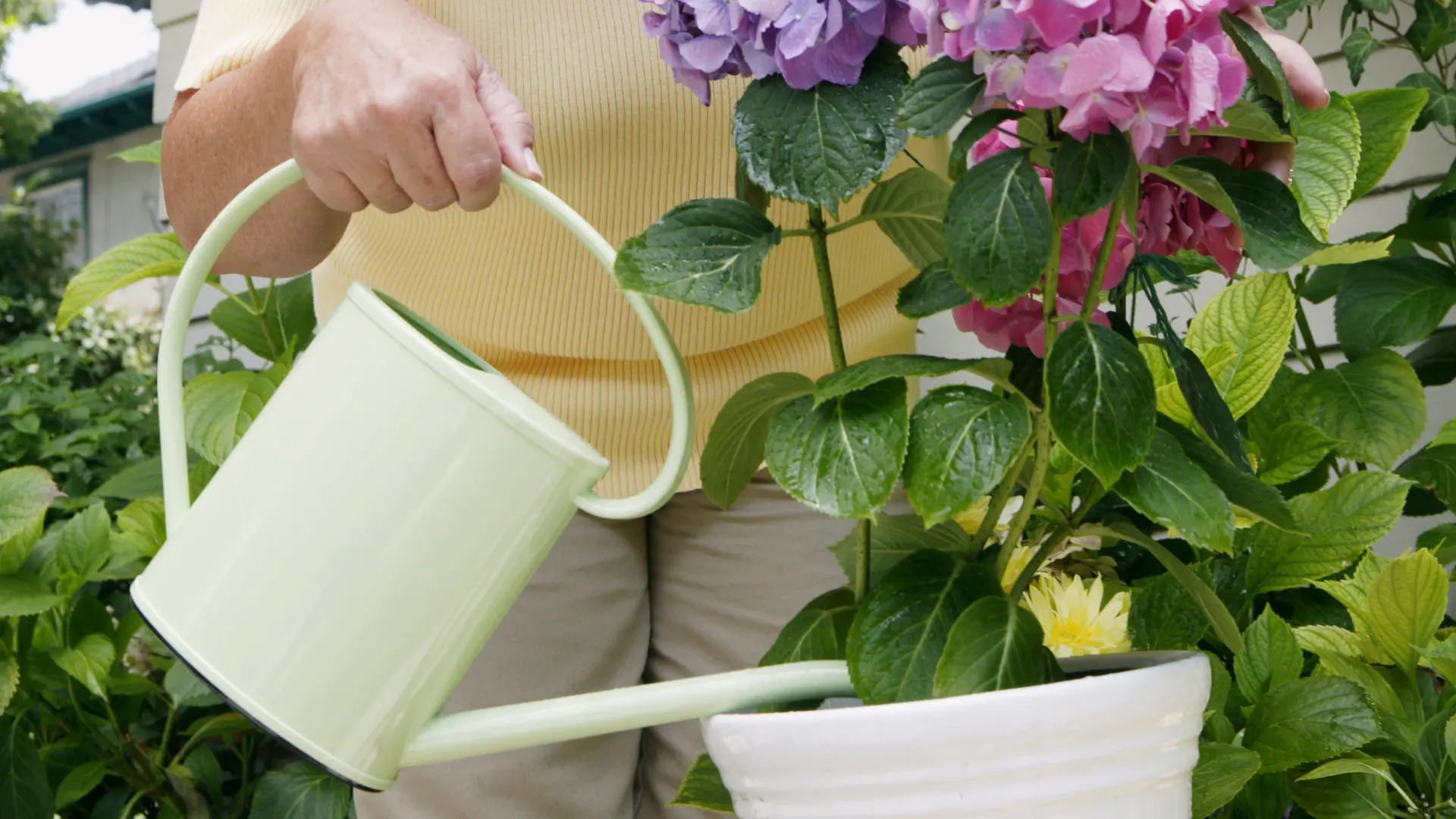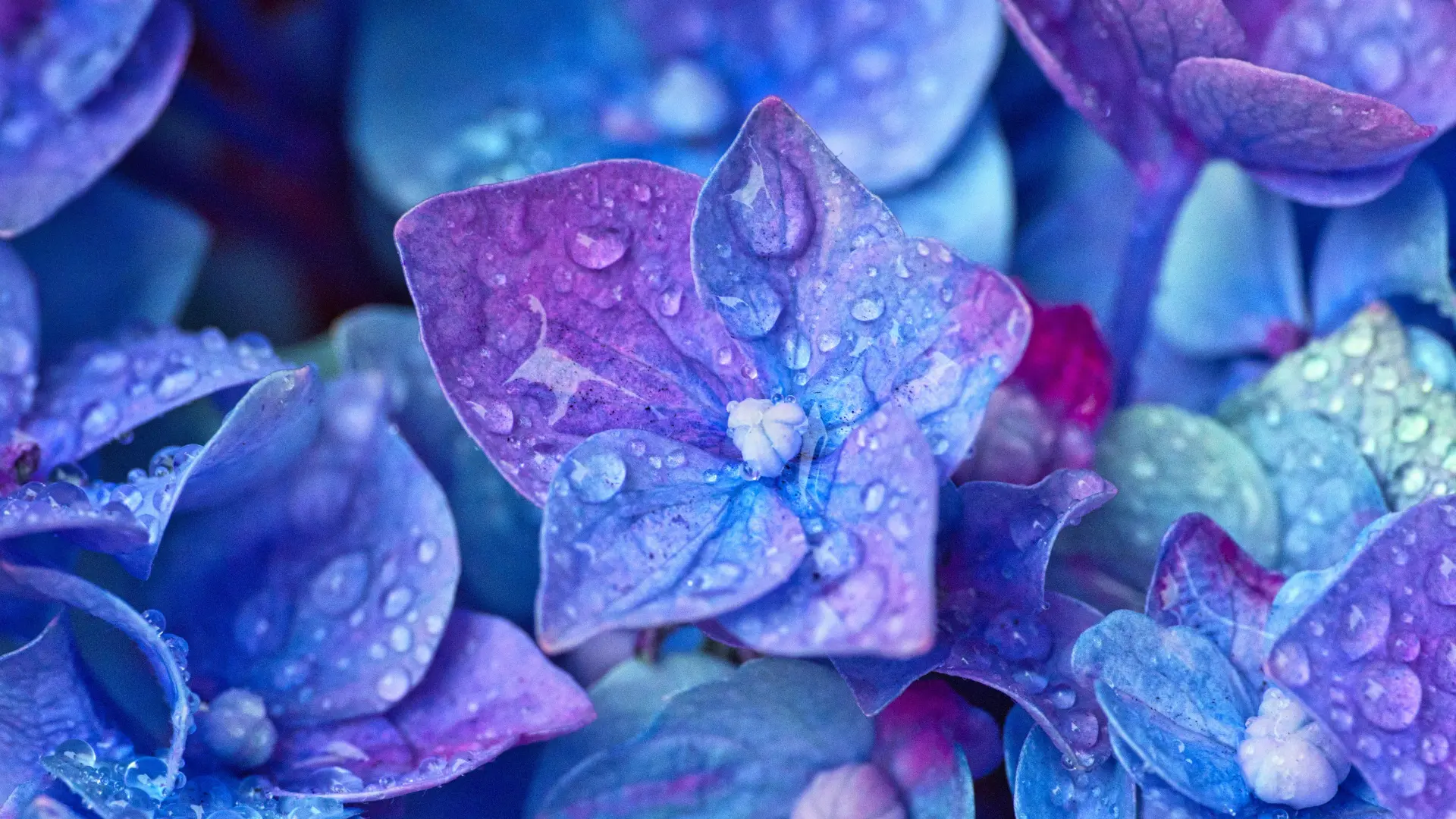Hydrangeas are lovely additions to any landscape. The Hydrangea got its name from two Greek words; ‘hydros,’ which means water, and ‘angos’, which implies jar. Hydrangeas are plants that need a substantial amount of water to thrive. This is can be true or false.
Hydrangeas need a lot of water when they become established as they are not drought-tolerant. However, they do not like sitting in water. Knowing your plant’s needs gives you a start on effectively taking care of your plant. Follow me as I teach you how to water Hydrangeas.
How to Water Hydrangeas

Irrespective of which Hydrangea you are cultivating, you must understand the plant’s watering needs. Although they’re notorious for water, they never like sitting in water. Examining your plant’s leaves is the basic rule for determining if to water your Hydrangea. If the leaves droop, the plant most likely requires water. There are some factors to consider when watering your plant, and they include:
- Newly Planted Hydrangea
It is critical to keep your hydrangeas watered at their early stage, then water them frequently, particularly during arid or drought conditions. You ought to plant them in well-drained, moisture-retentive soil.
Water Hydrangeas planted in the ground a minimum of thrice per week to help establish a robust root system. Mulch is essential because its roots are shallow. Use two- inches of hardwood mulch (not the dyed red stuff) to help retain moisture while also breaking down and adding organic matter to the soil.
- Established Hydrangea
You can use drip feeders and soaker hoses to enable water to get to the roots, which is the most crucial thing to do for hydrangeas. The amount of water required will differ based on the type of Hydrangea. Hydrangea macrophylla is the most water-demanding plant. Hydrangea arborescens and hydrangea quercifolia need less water. Watch your Hydrangea with drooping leaves, then the same plant 3 hours after being watered. Watering causes the leaves to perk up again and the plant to appear much better.
- Hydrangeas In Pots
If you’re going to plant in a pot outside, a light-colored ceramic pot will help retain moisture. Dark colours absorb heat more quickly. Guarantee there is a drainage opening. Water your Hydrangea thoroughly at least three times per week. Water the plant around the container rather than just in one spot. Water should drain from the pot’s bottom. Never leave it in water, as this will cause the roots to rot.
- Indoor Hydrangeas
Indoor hydrangeas follow the same guidelines. Water them as you would if outside, but ensure they get more light. Place them near a luminous window in a cool room for best results. Please do not allow them to sit in the water. They require at least four hours of morning sun to produce the best colour and flowers on the plant. It would be best if you took precautions against the afternoon sun.
How Much Water Does My Hydrangeas Need?
The quantity of water that Hydrangeas require varies based on various factors, making it difficult to provide a single answer. Hydrangea water requirements can vary depending on the species, the shade it receives, and the weather.
In addition, an established Hydrangea will require less water than a freshly planted Hydrangea. Instead of watering your hydrangeas daily, water them 2-3 times weekly. Weekly watering should be at least 1 inch (2.5 cm). Alternatively, if it does not overflow the soil, you can provide 1 inch of water weekly.
If you need help determining whether to water your Hydrangea, insert your finger around four inches into the soil close to the plant. If the ground feels parched, it’s time to water. If you live in a region where summer rain is familiar, consider dividing your watering into 2-3 weekly sessions. It ensures that your plants are not overwatered if natural rain falls during that week. Because we don’t all live in a bubble, other variables exist, such as weather, when deciding whether or not to water your plants.
Signs of Overwatering

Overwatering can prevent Hydrangeas from flourishing and producing the plant’s prized blooms. Your plant’s growth slows, and the Hydrangeas appearance deteriorates. If overwatering continues, the plant will wither and die.
Do you believe you overwatered your Hydrangeas? It’s easy to become so preoccupied with ensuring your Hydrangeas get enough water that you overwater them.
Here is how to tell if your Hydrangeas are overwatered:
- Root Rot
The first part of a hydrangea to suffer from overwatering is the root. Because roots are underground, you may not notice them immediately, but they will become slimy and begin to smell musty or moldy. To see if the roots are rotting, gently remove the soil from around them. If your plant roots appear dark and mushy rather than white, you have a problem.
- Yellow Leaves
When the roots of a Hydrangea rot due to overwatering, the roots cannot distribute nutrients in the soil to the leaves. It results in the leaves turning yellow. Because the roots are hidden beneath the soil, and the leaves are visible, you are more likely to observe this effect before noticing the roots’ problems.
- Brown And Mushy Leaves
Excessive water will cause your Hydrangea’s leaves to become mushy and the edges to brown. While this indicates overwatering, it could also suggest that your Hydrangea is underwater. Hydrangeas with overwatered roots have seriously affected roots, and defective roots cannot properly absorb water and nutrients from the soil and deliver them to the rest of the plant. So whether the leaves are under or over-watered, the impact is the same.
- Constantly Wilted Flowers
In high temperatures, the flowers of a Hydrangea may droop during the day but recover later in the evening. When a Hydrangea is overwatered, the flowers do not recover as the temperature decreases.
How To Fix Overwatering
The first step to take to combat overwatering is to stop watering. You can reduce the frequency of your watering if you notice overwatering signs. If the soil doesn’t dry well, add sand or compost to aid the soil.
Signs of Underwatering
To figure out some of the signs of underwatering in these plants, see some pointers below:
- Dry Brown Leaves
When you notice your plant’s leaves are brown and look dry, then know they have not been getting enough water.
- Drooping Flowers
When your flowers start drooping with the soil feeling dry, they probably lack water.
How To Fix Underwatering Problems
Underwatering issues are easy to solve. When you notice the signs of underwatering on your plants, give them a drink, and they will bloom back to life hours later. The solution to this problem is simple. Consider supplying more water. Upon the first sign of underwatering, give your Hydrangea a good long drink, and set reminders to water it one to three times per week, according to how quickly your soil dries out between waterings.
To begin, soak the affected Hydrangeas in water. Give them more water than usual to aid in the recovery of the roots. Slow down to allow the water to flow into the soil rather than pooling on the surface and running off. Continue deep watering several times per week.
